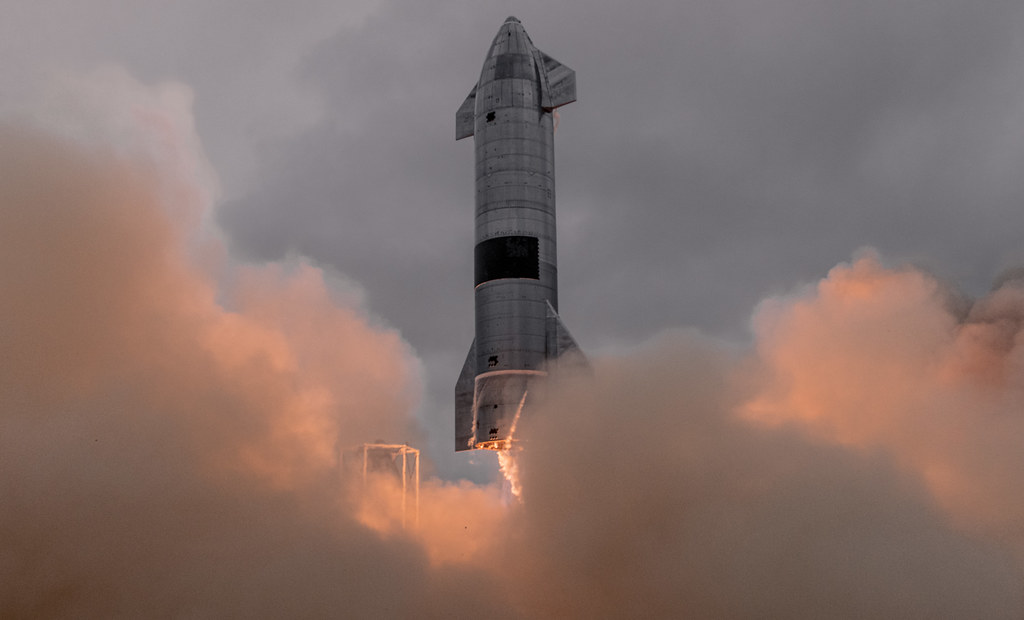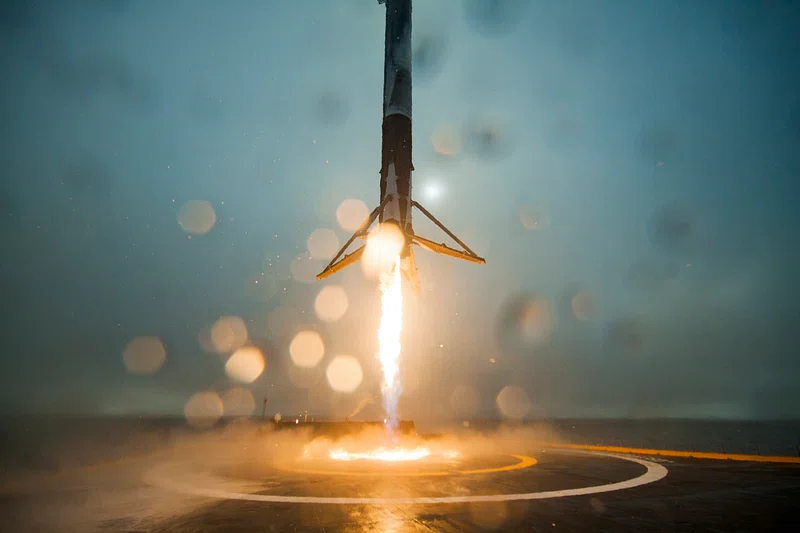SpaceX continues to push the boundaries of aerospace innovation, and their latest development at Starbase has caught the attention of space enthusiasts worldwide. The company has unveiled a new Composite Overwrapped Pressure Vessel (COPV) design with an orange protective jacketing, signaling a key improvement aimed at addressing the notorious S36 problem.
In this blog post, we’ll explore the significance of COPVs, the reasons behind the new design, and how these innovations tie into SpaceX’s broader vision for rapid reusability and spacecraft durability.
What Are Composite Overwrapped Pressure Vessels (COPVs)?
Understanding COPVs and Their Role in Spaceflight
Composite Overwrapped Pressure Vessels (COPVs) are high-pressure tanks designed to safely store gases and liquids such as propellants and life support gases. They are extensively used in aerospace, energy, and automotive industries due to their lightweight yet strong construction.
In SpaceX’s Starship system, COPVs store critical propellants like liquid oxygen and methane for the Raptor engines, as well as gases like nitrogen and oxygen for life support systems.

How Are COPVs Made?
A COPV consists of two main parts:
- Inner liner: Usually metal or plastic, providing a leak-proof barrier for storing gases.
- Composite overwrap: Layers of carbon fiber or Kevlar wrapped around the liner, giving the tank strength without adding significant weight.
Traditionally, COPVs have a dark carbon fiber appearance due to the carbon fiber composite shell.
The New Orange Jacketing on Starship COPVs
Why the Change in Appearance?
Recent images from SpaceX’s Starbase revealed COPVs wrapped in an orange-colored jacketing instead of the familiar black carbon fiber. This change has raised questions about the purpose and benefits of the new protective layer.
Purpose of the Orange Protective Jacketing
While COPVs are inherently strong, they remain susceptible to damage during handling, shipping, and installation. Previously, SpaceX used Ensolite foam padding for protection. However, studies indicated that foam alone was insufficient against impacts at speeds of about 19 meters per second (42 mph), which could deform the tanks and compromise safety.
The orange jacketing is a segmented metal cover that:
- Provides robust protection against physical impacts.
- Includes foam padding beneath the metal panels for added cushioning.
- Locks together with hook mechanisms for a secure fit.
- Likely remains in place post-installation to enhance durability during operations.
This innovative jacketing ensures that COPVs arrive intact and remain reliable throughout their lifecycle.
How COPVs Fit into Starship and Superheavy Booster
Critical for Propellant Storage and Engine Restart
In SpaceX’s Starship launch system:
- On the Superheavy booster, COPVs are stacked in columns and shielded with aerodynamic covers to reduce drag.
- On the Starship upper stage, COPVs are housed inside the nose cone and sometimes visible in mission footage.
These vessels store propellants critical for relighting the Raptor engines, enabling controlled landings and improving reusability.

SpaceX’s Shift Towards Durability and Reusability
Beyond Survival: Building for Rapid Turnaround
SpaceX is moving beyond ensuring mere flight survival; the focus is now on making Starship resilient enough for multiple flights with minimal repairs. The orange jacketing on COPVs is part of this shift towards enhanced durability and reliability.
Additional Hardware Upgrades
Other recent improvements include:
- A larger transfer tube on the Block 3 booster.
- Grid fins increased by 50% in size for improved control during descent.
These enhancements complement the COPV jacketing, collectively aiming to streamline refurbishment and enable rapid flight cadence.
Challenges with Starship’s Heat Shield
Metallic Tiles Testing and Setbacks
SpaceX also experimented with metallic heat shield tiles as an alternative to traditional ceramics. Although metal tiles are simpler to manufacture and potentially more durable, early tests revealed:
- The tiles oxidized quickly in high-oxygen environments during re-entry.
- Visible orange streaks appeared on the tiles, indicating degradation.
- Ultimately, metal tiles did not meet performance expectations.
Introducing the Crunch Wrap Technique
In response, SpaceX developed the “crunch wrap”, a novel installation method where:
- Each tile is wrapped in a special protective layer.
- Tiles are robotically snapped into place, ensuring tight seals without traditional gap fillers.
- This method enhances thermal protection and aerodynamic smoothness.
This innovation is expected to debut on Starship’s Flight 11, potentially improving heat shield reliability.
The Advantage of SpaceX’s Vertical Integration
SpaceX’s ability to manufacture materials, build components, and test in-house accelerates their development cycles. As Bill Gerstenmaier, VP of Build and Flight Reliability, stated:
“We can produce roughly 30,000 heat shield tiles per ship within a day or two, enabling quick turnaround and rapid iteration.”
This level of control over the supply chain gives SpaceX a competitive edge in solving complex engineering challenges swiftly.

Starship Flight 11: What to Expect
Mission Overview
Scheduled no earlier than October 13th, Flight 11 will be a critical test for Starship V2:
- The Superheavy booster will splash down in the Gulf of Mexico.
- The Starship upper stage will follow a suborbital trajectory, re-enter Earth’s atmosphere, and land in the Indian Ocean.
- The flight will test engine reignition during descent and deploy a new rocket satellite deployer.
- A dynamic banking maneuver will test new subsonic guidance systems.
New Engine Burn Sequence for Booster Landing
The booster will introduce a new landing sequence:
- Ignite 13 engines initially.
- Transition to five engines during divert maneuvers.
- Conclude with three central engines for final landing.
This extra phase adds redundancy and control, reducing the risk of landing failures.
NASA’s ISS Retirement: Challenges and Opportunities
ISS Deorbit Plan and Costs
NASA plans to spend around $1 billion to deorbit the International Space Station (ISS) by 2030, sending it on a controlled re-entry to burn up and crash into the ocean.
The Value of ISS Materials
The ISS contains over 430 metric tons of valuable metals and materials, worth over $1.5 billion in orbit. Destroying it means losing these resources forever.
A Vision for Orbital Recycling
Some experts advocate for repurposing and recycling ISS materials in orbit:
- This would create a circular space economy by transforming old hardware into raw materials.
- Could significantly reduce costs for future missions by reusing existing materials.
- Would promote sustainable space infrastructure development and reduce orbital debris.
Strategic and Economic Benefits
- Decreases reliance on costly Earth launches (~$3,500/kg).
- Diversifies supply chains and increases resilience.
- Supports national security by lessening dependency on ground-based launches.

Conclusion
SpaceX’s new orange jacketing on COPVs is a key step in their broader mission to create a rapidly reusable and resilient Starship. Alongside heat shield innovations and upgraded landing sequences, these advancements push the company closer to routine spaceflight.
Meanwhile, discussions around NASA’s ISS deorbiting highlight the growing importance of sustainability and recycling in space, hinting at a future where space debris becomes a valuable resource.
Stay tuned as SpaceX’s Flight 11 approaches, marking a pivotal moment in this exciting era of space exploration.
FAQs
1. What is a Composite Overwrapped Pressure Vessel (COPV)?
A COPV is a lightweight, high-pressure storage tank made with an inner liner and wrapped in composite fibers like carbon fiber, used to safely store gases and fluids in spacecraft.
2. Why are COPVs important for SpaceX’s Starship?
COPVs store critical propellants like liquid oxygen and methane, enabling engine relights and supporting life support systems during missions.
3. What does the new orange jacketing on COPVs do?
The orange jacketing is a segmented metal protective cover with foam padding that safeguards COPVs from damage during shipping, handling, and installation.
4. How does the orange jacketing improve COPV safety?
It prevents permanent deformation from impacts and ensures the tanks remain intact until installed and possibly during operational use.
5. What materials are COPVs typically made of?
They consist of a metal or plastic inner liner and an outer shell made from carbon fiber or Kevlar composites.
6. Why did SpaceX move away from using foam protection alone for COPVs?
Foam protection was insufficient against high-speed impacts that could deform tanks, compromising safety and performance.
7. Where are COPVs located on the Starship and Superheavy booster?
On the booster, COPVs are arranged in columns protected by aerodynamic covers, while on Starship they are stored inside the nose cone and payload bay.
8. What is the S36 problem related to COPVs?
The S36 problem refers to safety and reliability issues involving COPVs that SpaceX aims to solve with the new jacketing design.
9. How does SpaceX’s vertical integration help in developing COPVs and heat shields?
SpaceX controls materials production, manufacturing, testing, and analysis in-house, allowing rapid iteration and improvements.
10. What was the issue with metallic heat shield tiles tested by SpaceX?
The metal tiles oxidized quickly in high-oxygen environments and did not provide sufficient thermal protection during re-entry.
11. What is the “crunch wrap” technique used for heat shield tiles?
Crunch wrap is a protective wrapping applied around each tile to seal gaps without filler, improving tile attachment and heat resistance.
12. When is Starship Flight 11 scheduled?
Flight 11 is planned for no earlier than October 13th, 2025.
13. What new engine burn sequence will the Superheavy booster use on Flight 11?
It will ignite 13 engines, transition to five engines for divert maneuvers, and finish with three central engines for landing.
14. How does the new engine sequence improve landing safety?
The intermediate five-engine phase adds redundancy, allowing compensation if engines fail during descent.
15. Why is the International Space Station (ISS) being deorbited?
NASA plans to deorbit the ISS due to aging infrastructure and high costs of continued operation.
16. What is the potential benefit of recycling the ISS in orbit instead of deorbiting?
Recycling could preserve valuable materials, reduce space debris, and foster a circular space economy for sustainable development.
17. How could recycling orbital materials impact the future of space exploration?
It could drastically reduce launch costs, diversify supply chains, increase system resilience, and enable new commercial space industries.
Read More:
- Tesla’s advertising strategy takes a drastic turn, but some are questioning it
- 2026 NEW Tesla Model 2 Revealed: What is BREAKING the Market?
- Elon Musk’s Starship Big Solution: Skip Metal Heat Shield!? Flight 11 Ready to make History
- Tesla launches new color from Gigafactory Berlin
- SpaceX aces Starship’s 11th launch with success in every mission objective

